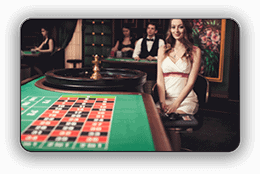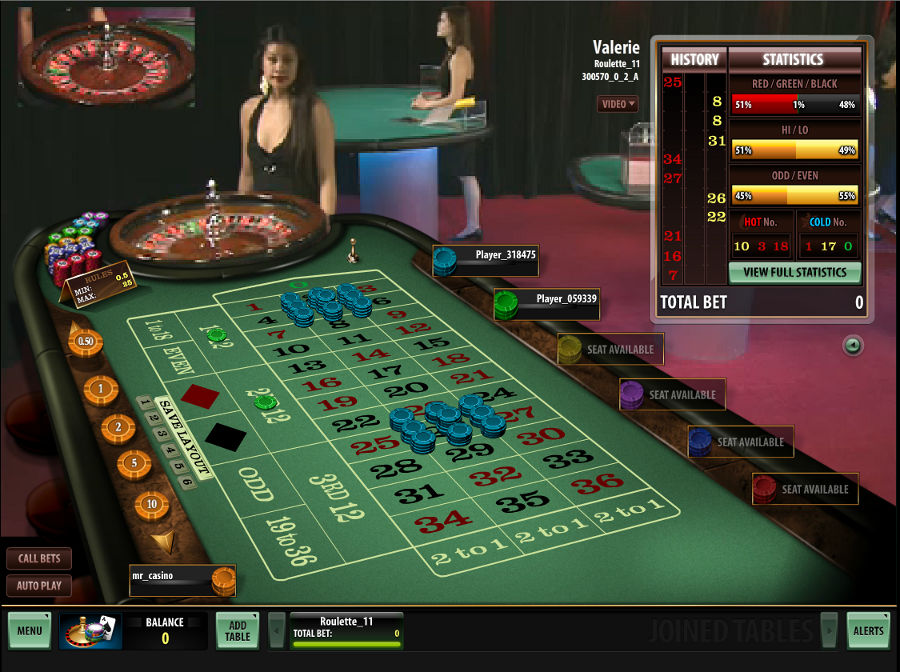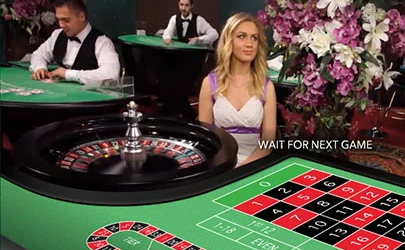At some gaming establishments in the United States, due to the lack of gaming control board inspections, one can assume that all roulette wheels located in illegal gambling halls may be rigged. In fact, one needs to be suspicious of wheels located in almost every state, with the exception of Nevada and New Jersey, no matter if the wheels are in legal or illegal halls.
- Live European roulette is the most common live roulette game that you can find online. It has the simplest rules, and it’s much more favourable to the player than the American version. By being so widespread, you can find plenty of live European roulette tables on casino sites with both high and low wagering limits.
- Playing live roulette online is perfect for the skeptic who just can’t bring themselves to trust the digital ball rolling around a digital wheel. For them, seeing a live person spin a real roulette ball on a table that exists in the three-dimensional world is a lot more reassuring than anything any third-party auditor can say.
- Nobody has ever made a living by playing RNG (software) roulette because it cannot be beaten. But many players have earned a living by playing on real wheels. No casino will care about your style of play on RNG roulette, but certain styles of play at a real roulette wheel may cause them to watch you closely. This should tell you something.
I have no reason to believe that Live Roulette is fixed, or Live casino providers are cheating players or the casinos that use their services. But that doesn’t mean you should just play anywhere. If you stick to some basic guiding principles you will minimise the risk of playing anywhere that is likely to cheat you.
The reason for it is there have been various ways to gaff roulette wheels since the genesis of the game itself and some of them are still in use today.
Now, let us dedicate some time to discussing the most common ways of rigging a wheel, which are, unfortunately, part of casino practice, especially at dishonest gambling establishments.
Ball Tripping
One method of rigging a roulette wheel, which establishments probably prefer the most, is to control where on the wheelhead the ball will likely come to rest. In order to do this, dishonest casinos use a procedure, known as ball tripping. With it the roulette ball is prematurely dislodged from the track, so that it settles into a particular desired section of the wheelhead. This can be done in a number of ways and has been a regular practice among casinos and roulette players.
At present, the majority of reputable casinos have placed plastic security shields around their roulette wheels, a measure which put to a halt any ball tripping methods employed by gamblers. However, at illegal casinos and establishments outside of Nevada and New Jersey, ball tripping techniques are still put to action on rigged wheels.
Rigging the wheel mechanically
A roulette wheel can be rigged in several ways, but the most commonly employed method includes the control of a trip pin placed in the ball track.
In case a dealer is willing to displace the ball from the track, he/she can do so by using a level under the edge of the roulette table. The dealer can attach this lever to a cable, which in turn is connected to a spring-loaded pin. This way the pin can be projected scarcely into the track. Whenever the ball spins around the track, it can be tripped with the pin and forced to fall onto the wheelhead.


In many cases the dealer will attempt to cause the ball to settle into the single zero or the double zero pocket. He/she will, of course, make an exception, if players have placed huge bets on those numbers, or if somebody has bet on the center column.
CasinoCruise
Sign Up100% up to
$/€100


Royal Panda
Sign Up100% up to
$/€200
+ 10 Spins
Vegas Hero Casino
Sign Up100% up to
€200
+ 50 Spins
BitStarz Casino
Sign Up100% up to
€100
+ 180 Spins
In case the dealer has a well-developed visual tracking ability, he/she will usually attempt to direct the ball to a wheelhead section where betting activity has been low. Some dealers have shown quite remarkable skill doing this, a skill that may even cause players to believe that those dealers can actually aim the ball after the latter is released. If it weren't for the trip pin, there will be no way for a dealer to direct the ball where he/she desires.
Another curious fact to note is that some wheels feature a brake, which can slow the rotation of the wheelhead. By using this ”additional element”, a skillful dealer is, in fact, able to synchronize the speed of the wheelhead to that of the ball, so that whenever the latter comes into contact with the trip pin, the wheelhead itself is positioned appropriately.
It may seem quite obvious, if a trip pin is well-made, it could be really difficult to spot. As the trip pin is located on the side of the wheel, which is closest to the betting layout, it cannot be immediately observed by players at the table. The hole in the ball track wall is usually minuscule, while the pin appears to be thinner than a six-inch sewing needle. In addition, the ball track is partially recessed under the rim, so it would be extremely difficult to have a clear sight of its ”modification”.
Can Live Roulette Be Fixed As A
Some casinos have come up with a more elaborate scheme.
They will rig their wheels by using small blocking pins, with each one of them being placed at the front wall of every pocket. In addition, under the roulette table at the dealer's side of the wheel, there will be two hidden levers. One of them will control the pins in the red pockets, while the other, the pins in the black pockets, respectively. Whenever a dealer moves one of the levers, this will extend the pins and prevent the ball from settling into that particular set (red or black) of pockets. As the pins jut out only during wheelhead rotation, players will probably have a difficult time detecting them.
Roulette Tournaments
Roulette Myths
Roulette Etiquette
How to Rig a Roulette Wheel
European Roulette

Because this is a more complex scheme than a single trip pin, it is not immune to failure at all (jamming, for example). And because such a way of wheel rigging blocks individual numbers having a certain color, dealers usually employ it against players with a habit to bet on color.
There is another wheel gaffing scheme, known as the ”set wheel”. Casinos can set such wheels to favor a particular group of pockets by widening or narrowing the space between the pocket separators. As a result, one set of pockets will be made wider and another one – narrower. These wheels are rigged, so that alternate pocket separators are attached to the center hub. Whenever that hub is turned either way, the dealer is able to control the width of alternate pockets. The overall effect is very much the same as that caused by blocking pins.